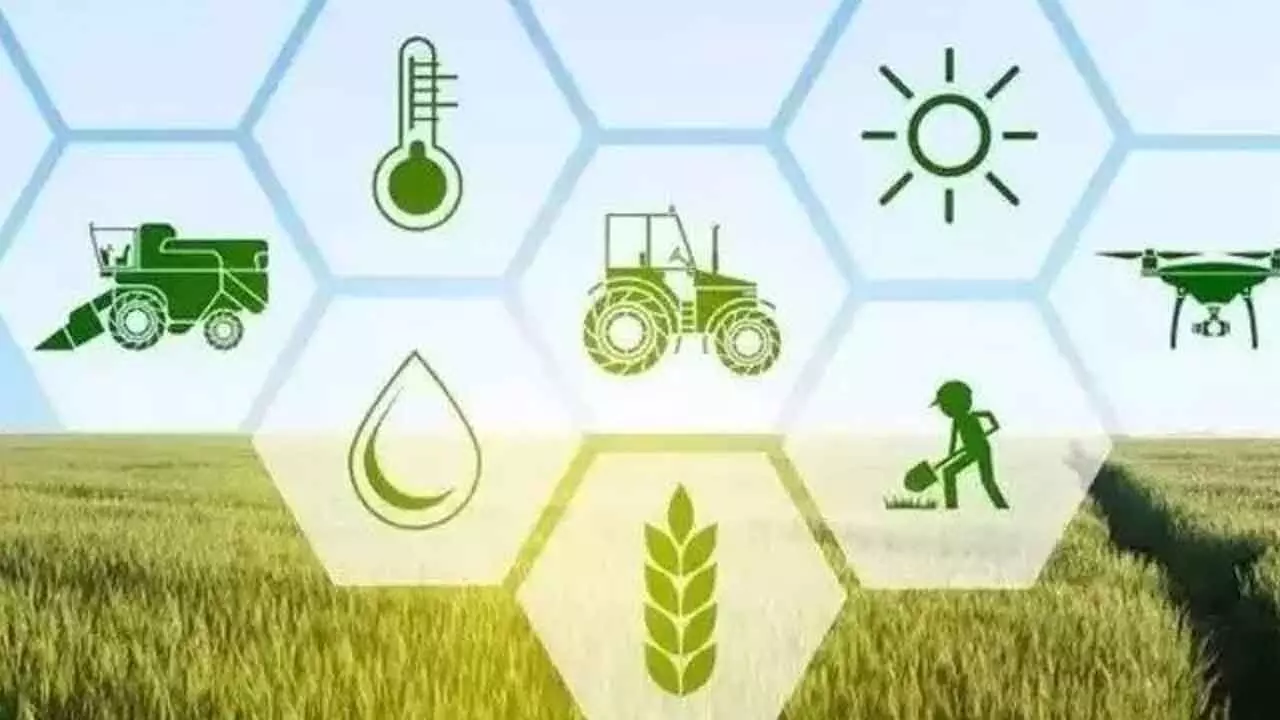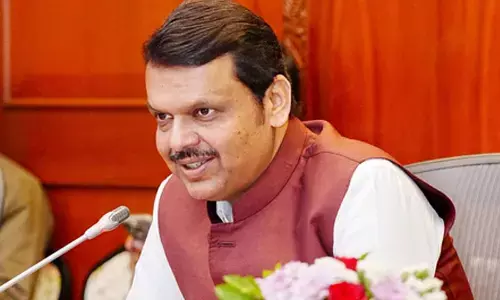How to boost agricultural growth

- Investment in research and digital advancements are critical for the sector
- There is pressing need to focus on the sector in the Vision of Viksit Bharat
Allocation of funds towards climate-resilient initiatives is insufficient, given the magnitude of the challenges posed by climate change. While the introduction of new crop varieties is a commendable effort, it may not be enough to safeguard agricultural productivity in the face of increasingly unpredictable weather patterns
Transitioning from the interim budget, the Union Budget 2024-25 places significant emphasis on supporting farmers and women, making agriculture a key focus in the vision of Viksit Bharat. While this budget offers optimism for the agricultural sector, it also presents challenges. As highlighted in the Economic Survey 2023-24, agriculture is at a crossroads of the most pressing issues of the century – ensuring nutritional and food security, addressing climate change through adaptation and mitigation, and striving for sustainable use of critical natural resources like land, water, and energy.
Boost productivity
With India’s growing population, the rising demand for food can only be met by increasing agricultural productivity. This necessitates greater investment in agricultural research. Recognising this need, the 2024-25 budget has increased the allocation for Central Sector Schemes by Rs356.98 crore, a 14.7% rise from the 2023-24 budget. Within this allocation, a significant portion – about 34% – is dedicated to food and nutritional security in crop science.
As agriculture becomes more dependent on knowledge and information, agricultural extension services are becoming increasingly essential. However, the budget’s withdrawal of grants for these services could undermine efforts to strengthen the agricultural sector, given that limited access to capital and information are key barriers to fully utilizing technological advancements. While the budget promotes public and private investment in post-harvest activities such as storage, supply chain management, processing, and marketing, expanding opportunities for private investment in agricultural research could further enhance productivity through technological innovation.
Missed opportunity
Climate change remains the most significant threat to agriculture, making adaptation and mitigation crucial for reducing crop losses and ensuring the sustainability of food production systems. Although this budget seeks to develop climate-resistant crop varieties through increased funding for agricultural research, it lacks specific allocations for climate-resilient initiatives. However, the introduction of 109 high-yielding and climate-resilient crop varieties across 32 crops is expected to boost productivity and benefit farmers.
A notable initiative is the plan to develop a taxonomy of climate finance which would help enhance capital for climate adaptation and mitigation thereby reinforcing India’s climate commitments. This move will augment clarity and efficiency in securing funds from private, public, and international sources, while also streamlining climate action guidelines from the higher levels of government down to the implementation level. Given the rise in frequency and severity of extreme climate events, uncertainty surrounding the timeline for the announcement of the climate finance taxonomy poses a significant concern.
Invest in digital
infrastructure
Expanding digital infrastructure in agriculture can enhance the efficiency and transparency of the sector. A notable move in this direction is the Finance Minister’s intention to implement Agri Stack, a Digital Public Infrastructure (DPI) initiative. Agri Stack aims to integrate over 60 million farmers into the formal land registry system within three years, facilitating the transparent delivery of government schemes to beneficiaries. This system could also promote climate-smart practices by using information to mitigate the adverse effects of climate change and advance sustainable agriculture.
Additionally, the budget outlines a digital crop survey across 400 districts, which will improve crop estimation accuracy, helping to anticipate demand-supply imbalances and plan interventions effectively. The issuance of Kisan Credit Cards under the Jan Samarth scheme will further streamline farmers’ needs through an online platform. However, the success of these digital initiatives depends on improving farmers’ digital literacy and internet connectivity.
Empowering
women
The budget also focuses on women in agriculture, allocating Rs 500 crore to the Namo Drone Didi scheme. This initiative aims to empower women in self-help groups (SHGs) by providing them with opportunities to enhance their employment prospects and increase their income. The scheme will offer training in drone piloting for pesticide and fertilizer application, equipping women with valuable technical skills. Beyond empowering rural women, the scheme will modernize agriculture, reduce farmers’ physical burdens, and improve safety by minimizing exposure to hazardous pesticides.
Conclusion
While the Union Budget 2024-25 introduces several promising initiatives aimed at boosting agricultural growth, it also raises important questions about the feasibility and equitable distribution of these benefits. The increased investment in agricultural research is a positive step, but the withdrawal of funding for extension services may limit the sector’s ability to fully capitalize on technological advancements. The emphasis on digital infrastructure, particularly the Agri Stack initiative, has the potential to revolutionize agricultural practices, yet its success hinges on the enhancement of digital literacy and internet connectivity among farmers. Without addressing these foundational issues, the digital divide could widen, leaving many farmers unable to reap the benefits.
Moreover, the allocation of funds towards climate-resilient initiatives is insufficient, given the magnitude of the challenges posed by climate change. While the introduction of new crop varieties is a commendable effort, it may not be enough to safeguard agricultural productivity in the face of increasingly unpredictable weather patterns. The development of taxonomy for climate finance is promising, but the lack of a clear timeline raises concerns about subsequent actions.
The focus on empowering women through the Namo Drone Didi scheme is another highlight of the budget, but its long-term impact will depend on how well these women are integrated into the broader agricultural economy. Training and skill development are crucial, but they must be accompanied by sustained support and access to markets to ensure that these initiatives lead to meaningful economic empowerment.
In sum, the Budget 2024-25 sets the stage for significant advancements in the agricultural sector, but the true test lies in its implementation. The government’s ability to address the underlying issues—such as digital literacy, climate resilience, and equitable access to resources—will determine whether these initiatives can deliver on their promise of fostering sustainable and inclusive agricultural growth.
(Writers are from Vinayaka Mission’s School of Economics and Public Policy, Chennai)




















